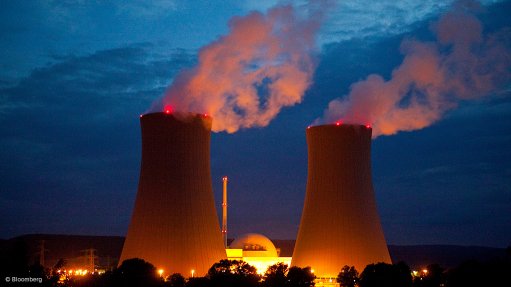
Photo by: Bloomberg
The Japanese nuclear power generation sector, which was shut down in 2011, in the aftermath of the Fukushima disaster, is set to reopen on a limited scale with the expected recommissioning of two units in the next two to three months.
Japan Atomic Industrial Forum president Takuya Hattori said in Moscow earlier this month that the two units were among those recently approved for recommissioning and that several other units could be up and running again by the end of the year. He was speaking exclusively to Engineering News on the sidelines of Atomexpo 2015, a three-day international nuclear energy conference.
Before the Fukushima disaster, nuclear accounted for 30% of Japan’s electricity supply. Hattori said this technology’s contribution to the Asian country’s energy mix was expected to gradually increase from zero at present to between 20% and 22% by 2050.
He acknowledged that the sector’s coming back on stream would be slow, owing to a regulatory process that had become extremely stringent and lingering public negativity towards nuclear energy. “More than 160 000 people were displaced from their homes as a result of the disaster and people will never forget about Fukushima,” said Hattori, adding that a recent survey indicated that 60% of the Japanese population was opposed to the reopening of the nuclear electricity generation sector.
However, he was optimistic that the sector would gradually become a significant energy source for the country once again, owing to nuclear’s price competitiveness and the fact that it did not exacerbate global warming.
Japan, which relies on imports for its power generation fuel, currently generates 89% of its electricity from gas, oil and coal, with hydro accounting for 9% and wind and solar 2% between them.
Earlier, World Nuclear Association director-general Agneta Rising had said the future of nuclear energy looked bright, with 67 plants currently under construction, many of them in Asia and the Middle East.
The global nuclear build push was in res-ponse to growing energy demand in a world where many countries were striving to limit the emission of climate-changing greenhouse gases.